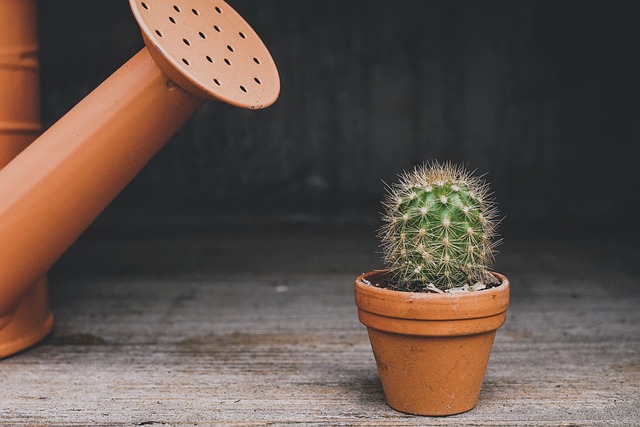Taking care of indoor plants can be tricky. However, there are a few things you should remember to make sure your plants stay healthy. You need to keep them away from heat sources, water them frequently, and clean them regularly.
Watering
Whether you are trying to maintain your indoor plants or are a novice, there are several important factors to consider. Some of the most important things to remember are: the temperature, the humidity, the plant type, and the water.
When watering indoor plants, you may want to use a drip tray, a pot filled with water, or even a bath. It’s important to remember that the water should be lukewarm or room temperature. Freezing water is not good for your plants and can even be fatal.
In general, you should water your plant when the top layer of soil is dry. However, the moisture level of the soil should be monitored more frequently during the summer. If you are unsure of the moisture level of the soil, use your finger to touch the surface of the soil. Some plants like to sit in moist soil for long periods of time, while others like it dry out to the point of wilting.
The temperature of the air can also affect the moisture level of the soil. You should water your plant more often during the warmer months and less often during the cooler months.
Depending on the plant, you may want to use a soil moisture gauge to determine how much water your plant needs. This will allow you to better water your plant without wasting water.
There are a few common mistakes that people make when it comes to watering indoor plants. One of the most common mistakes is overwatering. This can cause the roots to drown and choke out oxygen. It can also harm the microbes in the soil, which can stunt the growth of the plant.
The best water for indoor plants is rainwater or melted snow. Watering indoor plants in salt water can also be harmful.

If you have a container of plants that you plan to take on vacation, you need to make sure that you bring along enough water. You can use a plastic bottle, a zip lock bag, or a small pot. You should also consider the humidity of the area where you plan to travel.
Fertilizing
Using the right fertilizer can be a big help for your houseplants. You can choose between granular or liquid fertilizer. The latter is a faster and easier option for you to apply to your plants. However, this fertilizer also requires more frequent applications.
Liquid fertilizers are easy to use and contain proprietary microbes that can enhance soil fertility. These liquids can be easily mixed with water and applied to the plant. Some liquids contain kelp extracts that help the plant fight off pests. You can also make your own liquid fertilizer at home.
When choosing a fertilizer, make sure you understand the plant’s nutrient needs. You can also read the fertilizer instructions to know how to use it effectively.
The best time to fertilize your plants is in early spring. You can also make a schedule to make sure you fertilize your plants at the right times. The general rule is to fertilize all your plants during the growing season.
When choosing a fertilizer, remember that the plant needs nitrogen, phosphorus and potassium. These three nutrients are important for healthy growth. However, they are not the only nutrients plants need. A good fertilizer will also strengthen the plant’s roots and help them fight off infections.
In addition to fertilizer, your plants may need plant food. If you have houseplants that are slow-growing or dull, they may need a little extra help. You can add plant food to the soil before potting them. Another option is to mix hair with the soil before potting. Hair breaks down to provide valuable nutrients to the plant.
Indoor plants require regular fertilization to maintain a healthy root system. You can use organic fertilizers or chemical fertilizers. However, you need to be careful when fertilizing your indoor plants because excess fertilizer can burn the roots.
Slow-release fertilizers are the best for sensitive plants. You can use traditional formulas or a spike. You may also use a spray bottle. However, you should always follow the instructions on the fertilizer container to ensure that your plants are getting the nutrients they need.
It is also important to make sure you are using the correct ratio of fertilizer. Plants need a balanced ratio of nitrogen, phosphorus and potassium to thrive.
Keeping them away from heat sources
Keeping indoor plants away from heat sources is important if you want to maintain their health and beauty. Heating a home can strain the soil and make the air inside the home dry, which is not conducive to plant growth. Luckily, some of the equipment you use inside your home can be winterized to help your plants stay happy all year long.
The best way to keep your indoor plants cool is to keep the air circulation flowing. You can also increase humidity inside your home by using a humidifier or by putting a dish of water near your heater. In the winter, it’s also important to keep windows and doors closed to prevent cold drafts.
In general, the best temperature for your plants is about 65 to 75 degrees Fahrenheit. In the winter, your average nighttime temperature should not drop below 55 degrees F.
You’ll also want to keep the moisture in your plants happy and healthy. Using a humidifier to create more humidity in the air is a great way to keep your plants happy. You can also use a spray bottle to add moisture to your plants.
The best way to keep your indoor plant in tip-top shape is to rotate it once a week or so. This will not only help it keep its shape, it will also help it to better handle changes in temperature. Some plants will not need as much water in the winter as they do during the summer months.
For the best results, it’s also a good idea to check your plants moisture levels on a regular basis. Using the wrong potting medium can lead to root rot. Fortunately, there are ways to keep your plants happy all year long, and it’s never too early to get ready for the new season. Using the best products and following the right procedures can help keep your plants happy and healthy all year long. With the right tools and a little know-how, you can keep your plants happy and healthy all year long. Best of luck! The most important thing is to take good care of your plants!
Cleaning them regularly
Keeping indoor plants clean is crucial in order to maintain their health. Dust and dirt build up in the leaves, and can prevent the plant from photosynthesizing. Dirt and dust also block sunlight from reaching the leaves, and this can slow the plants’ growth. Cleaning plants regularly will also improve the plants’ appearance, and prevent pests.
Houseplants need a specific amount of light to photosynthesise, which is their main source of nutrition. Clean plants can photosynthesise at optimal levels, and this helps the plants to avoid pests and diseases. They also help increase the air quality in your home.
It is best to clean plants with lukewarm water. This water will not shock the plant’s roots, and it will also not leave behind mineral salts. You can also use a gentle spray with water to clean plants. However, not all houseplants are appropriate for spraying.
You can also clean indoor plants by washing them with soap and water. If your plants have a buildup of dust, you can use a soft brush or feather duster to remove the buildup. You can also use dish soap to clean your plants, but this will leave a residue on the leaves.
Another way to clean your plants is to use a solution of rubbing alcohol and water. This is also a good way to clean plants if you have a pest infestation. However, you should use a clean rag to wipe off the rubbing alcohol residue.
If your plant has a buildup of dust, you can also try a neem oil treatment. The neem oil will help to remove the dust, and it will also help to keep the leaves clean. However, you should not use a neem oil treatment every time you clean your plant.
Another good way to clean your indoor plants is to hose them down. If you use a hose to water your plants, the water will clean off the dust and give the plants a drink. The hose will also help the plants to breathe, since the water will leave them a fresh breeze.
